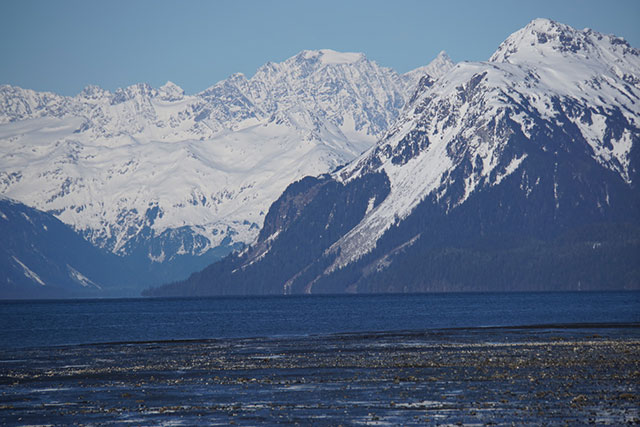
It’s war in the Gulf and the US Navy is on hand to protect us. No, not that Gulf! I’m talking about the Gulf of Alaska and it’s actually mock war — if, that is, you don’t happen to be a fin whale or a wild salmon.
This May, the Navy will again sail its warships into the Gulf of Alaska. There, they will engage in military maneuvers and possibly drop bombs, launch torpedoes and missiles, and engage in activities that stand a significant chance of poisoning those once-pristine waters, while it prepares for future battles elsewhere on the planet. Think of it as a war against wildlife, an assault on the environment and local coastal communities.
And call it irony or call it American life in 2017, but the US military’s Alaska Command has branded Emily Stolarcyk “a troublemaker” for insistently pointing this out. In a state where such a phrase is the equivalent of an obscenity, some have bluntly called her “anti-military.” The office of Republican Senator Lisa Murkowski has termed her a “rabble-rouser,” while a Kodiak Assembly member labeled some of what she’s been saying about the Navy “just silly.”
As a resident of the tiny fishing town of Cordova, Alaska, the most radical rabble-rousing thing about Stolarcyk may be the passion with which she loves this region of the planet in all its majesty. It’s why she’s taken a fierce and unwavering stand for years now against the ongoing training exercises the Navy carries out in the Gulf of Alaska during one of the largest migrations of birds and marine life on Earth. These exercises, which inject tons of toxic materials into the Gulf and use significant explosive ordnance, are once again scheduled to take place just as Alaska’s commercial fishing season opens.
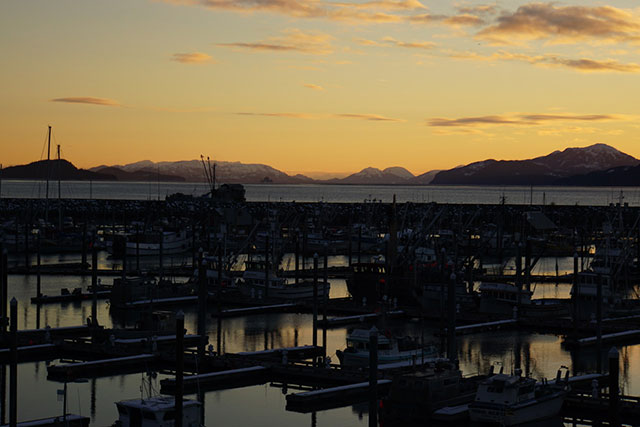 Cordova, Alaska boat harbor. Cordova is regularly one of the top 10 fishing ports in the United States. (Photo: Dahr Jamail)
Cordova, Alaska boat harbor. Cordova is regularly one of the top 10 fishing ports in the United States. (Photo: Dahr Jamail)
Located in the state’s massive Chugach National Forest, coastal Cordova is nestled between the glacial-clad Chugach Mountains, Prince William Sound, and the Copper River. Fishing is the heart and soul of the town, as well as the foundation of its economy. A rough and tumble place, it regularly lands on lists of the top 10 American fishing ports, whether measured in pounds of fish caught annually or their value. A fish tax pays for its schools and the upkeep of most of its infrastructure. At least a quarter of its jobs are connected to the commercial fishing industry. “Without fishing, the town wouldn’t even be here,” says Stolarcyk, who knows the intricacies of the Navy’s plans better than most people in the Navy do, as we tour Cordova’s harbor.
It is impossible to overstate how iconic salmon are here. “What we have in Cordova is one of the last wild places left in the world, and one of the last places on Earth where we still have healthy salmon runs,” she tells me. She’s the program director for the Eyak Preservation Council, an environmental and social-justice-oriented nonprofit based in Cordova, whose primary mission is to protect wild salmon habitat.
Her partner is about to start his seventh season as a commercial fisherman. Their apartment building even has a fish smoker. “Salmon bring this town to life, you can feel the energy once the fish start returning, it’s palpable,” she explains, excitement in her voice. “You can hear the boats coming in and people go to stand on the shore to welcome them back.”
However, this year, as in 2015, the Navy plans to conduct its part of Northern Edge 2017 (NE 17), a training exercise, right in her neighborhood. These war games, which occur every other year, include ships, aircraft, ordnance, and the widespread use of sonar across more than 42,000 square nautical miles of the marine environment of the Gulf of Alaska. And it is well known that sonar causes injury and death to whales, dolphin, and other marine life. It has been shown that whales will even beach themselves to escape the noise, which is more than 100 decibels louder underwater than even the loudest rock concert. Thanks to a major lawsuit against them, the Navy agreed to limit the use of certain kinds of sonar in Southern California and Hawaii, due to its impact on the endangered Blue Whale along with other species. But not in the Gulf of Alaska.
Fishing for an Answer
As in 2015, the Navy’s plans threaten an area of the Gulf that couldn’t be more biologically sensitive or rich in wildlife. Their training area includes a State of Alaska Marine Protected Area, a National Oceanic and Atmospheric Administration Fisheries Protected Area, and both the Gulf of Alaska Seamount Protected and Slope Habitat Conservation areas.
Nevertheless, the Navy is requesting permits to use live ordnance including bombs, missiles, and torpedoes, along with active and passive sonar in “realistic” war-training exercises that could release as much as 352,000 pounds of “expended materials” into those waters including, according to the Navy’s own Environmental Impact Statement (EIS), missiles, bombs, and torpedoes.
These waters support some of the most valuable fisheries left in the United States and the commercial fishing industry is the single largest private sector employer in the state of Alaska, providing over 63,000 jobs. Nevertheless, the Navy’s own EIS claims that fish in the area are at risk of chemical exposures of various sorts because the war games will introduce chromium, lead, tungsten, nickel, cadmium, cyanide, and ammonium perchlorate, along with numerous other heavy metals and toxic substances, into Alaskan waters. According to the EIS, “Little is known about the very important issues of nonmortality damage in the short and long-term, and nothing is known about the effects on behaviour of fish.” It adds that “potential effects” include “death or damage” and that “fish not killed or driven from a location by an explosion might change their behavior, feeding pattern, or distribution.”
While the Navy itself is aware of some of the damaging impacts of its exercises, others remain unknown and that service is making no effort to learn what they might be. The precautionary principle of do no harm is clearly not operative here.
The Navy’s EIS does estimate that, during the years in which these war games are to be conducted, there will be more than 182,000 “takes” — direct deaths of marine mammals or disruptions of their essential behaviors like breeding, nursing, or surfacing. On fish deaths, it offers no estimates at all.
A partial list of affected species includes blue, fin, gray, humpback, minke, sei, sperm, and killer whales, the highly endangered North Pacific right whale (of which there are only about 30 left), as well as dolphins and sea lions. No fewer than a dozen native tribes including the Eskimo, Eyak, Athabascan, Tlingit, Sun’aq, and Aleut rely on the area for subsistence living, not to speak of their cultural and spiritual identities.
As the May 1st launching day for NE 17 looms, we already have at least some inkling of just what kinds of damage might result. Immediately following Northern Edge 15, Alaska witnessed the single largest whale mortality event ever to occur in its waters. Eighteen carcasses of endangered whales were found floating near Kodiak Island within the area in which the Navy had conducted its exercises, attracting national media attention.
Statewide, in the year that followed, Alaska had its worst pink salmon fishing season in four decades. A federal disaster declaration was even issued to give salmon fishermen some relief, deferring the repayment of loans. That year also saw the biggest die off of Murres, a small seabird, ever recorded in the state.
Human-caused climate disruption impacts had long been noted across the North Pacific, whose climate-change-affected waters were warming to record temperatures that year. While this obviously played a role in such events, what impact the naval exercises had across the Gulf of Alaska remains largely unknown, in part because the Navy refused in 2015 — as it will again this year — to allow independent observers on its ships or to conduct follow-up studies focused on how their war games impacted the environment and marine life.
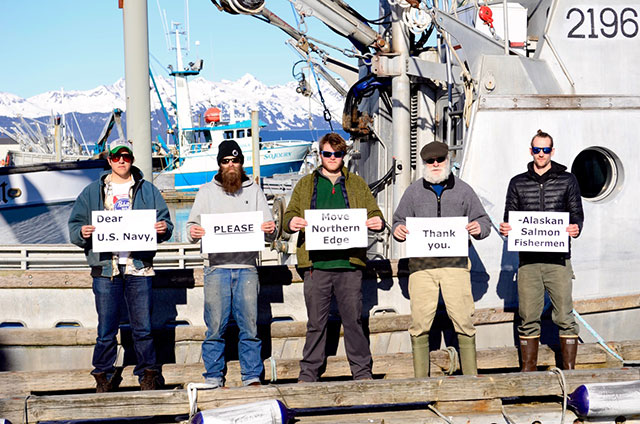 Growing numbers of fishermen in Cordova, Alaska, along with thousands of others along coastal Alaska, have grown weary of the US Navy’s war games occurring during the opening of commercial fishing season in the Gulf of Alaska. (Photo: Emily Stolarcyk)
Growing numbers of fishermen in Cordova, Alaska, along with thousands of others along coastal Alaska, have grown weary of the US Navy’s war games occurring during the opening of commercial fishing season in the Gulf of Alaska. (Photo: Emily Stolarcyk)
Local opposition is strong, as 10 Alaskan communities have passed resolutions requesting that the Navy move the timing and location of Northern Edge 2017 and all future training events to the fall or winter months and further offshore to minimize their impact on fisheries and migrations. Furthermore, the mayors of Cordova, Girdwood, Tenakee Springs, and Valdez sent letters to Senator Murkowski, requesting that she ask the Navy to relocate NE 17. The senator, hardly a critic of the military, nonetheless wrote the secretary of the Navy last September to “express concern over the manner in which the Navy is approaching its participation in Northern Edge 2017,” and called a lack of naval public affairs guidance “extremely troubling.”
Assistant Secretary of the Navy Dennis McGinn replied, “I readily admit we could have done a better job reaching out to potentially affected stakeholders leading up to NE 15.”
Stolarcyk is truly a David going up against the naval Goliath. Her dedication to this region of the planet has been and continues to be unwavering.
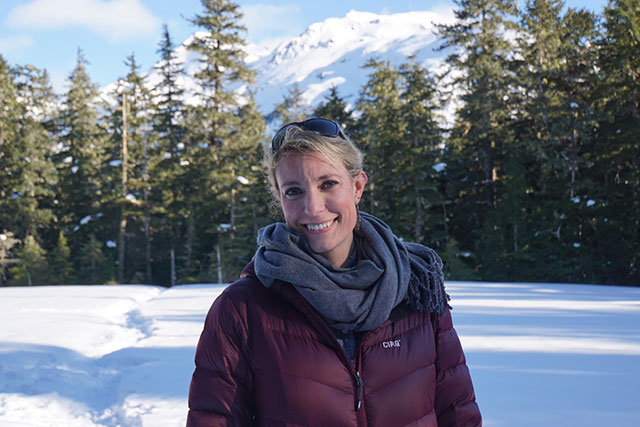 Emily Stolarcyk, the program manager for the nonprofit Eyak Preservation Council has spent years working to protect the biologically sensitive Gulf of Alaska from the Navy’s harmful exercises. (Photo: Dahr Jamail)
Emily Stolarcyk, the program manager for the nonprofit Eyak Preservation Council has spent years working to protect the biologically sensitive Gulf of Alaska from the Navy’s harmful exercises. (Photo: Dahr Jamail)
“How could you live in this place and experience all this beauty and not get how precious this is,” she asks with typical intensity as we walk near her town’s harbor and bald eagles soar above us. “I love this place so much, and I can’t even let myself feel all my emotions when I’m working on this issue, because I wouldn’t be able to function.”
The late afternoon sun is just beginning to hint at the evening to come as she stares out into the waters of the Gulf, takes several deep breaths, and says, “We have to defend our lifestyle here, because if we don’t do it, who else is going to do it? If the Navy destroys the Gulf of Alaska, they can just leave, while we’re the ones who have to live with whatever is left.”
“The Navy Is Getting Away With Murder”
My trip to Alaska to report on the upcoming war games began in the small ski town of Girdwood, a 40-minute drive east of Anchorage. There, Stolarcyk and I met up with her colleague, Christina Hendrickson, as they continued their efforts to push the Navy’s schedule for the war games out of prime wildlife season. Hendrickson, who specializes in environmental law, is a former defense contractor. Like two high-octane lawyers before a big trial, she and Stolarcyk instantly begin talking a mile a minute about what their next moves should be.
They bring me up to speed on the latest Navy maneuvers in what is now a publicity war over Northern Edge 17 and the way its officials have officially opted to “work with the stakeholders.” On the other hand, as Hendrickson points out to me, “they have refused to meet with Emily and myself” — and, as it happened at that point, me, too. I’d recently contacted Captain Anastasia Schmidt, director of public affairs for Alaska Command in Anchorage, to arrange a meeting and my request had been denied.
Unfortunately, as Hendrickson points out, the permits the Navy requested from both the National Oceanic and Atmospheric Administration and the National Marine Fisheries Service allow them to war game their hearts out in the Gulf for the next five years without taking the slightest responsibility for analyzing the potential impact of their actions or dealing with the myriad species migrating through the area during the training period. While those who fish here must adhere to environmental standards, the Navy doesn’t have to.
“Imagine that you have a friend who is a subsistence fisherman,” Hendrickson says, “who is looking at his nets each season, and on the seasons the Navy trains, there seems to be less fish in them, and there are less whales returning, and then there’s a huge Murre die off. There are sick sea otters or sea otters not returning at all. It’s obvious to me that the Navy is not connecting these dots.”
I ask her what exactly drives her on this issue and she stares out the window at the still snow-covered trees, then looks me dead in the eyes and says, “The Navy is getting away with murder and that upsets me.”
“If It Walks, Swims or Crawls, I’ve Fished It”
Stolarcyk and I fly on to Kodiak Island where we meet up with Tom Lance, the natural resources director for the Sun’aq tribe. We’re there so that the two of them can make a presentation to the island’s Borough Assembly in hopes of inspiring another Alaskan community to pass a resolution against the timing of the exercises.
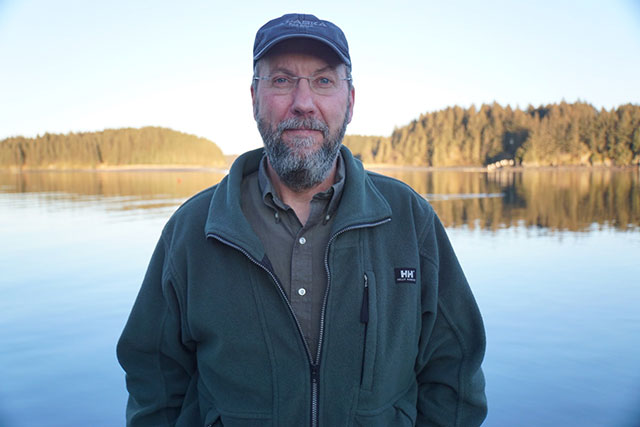 Tom Lance, the natural resources director for Kodiak’s Sun’aq Tribe, who has been working to protect Kodiak from the Navy’s exercises for years. (Photo: Dahr Jamail)
Tom Lance, the natural resources director for Kodiak’s Sun’aq Tribe, who has been working to protect Kodiak from the Navy’s exercises for years. (Photo: Dahr Jamail)
Lance and I sit down in a café on the outskirts of town and he immediately begins describing the massive whale carcasses floating in the Gulf of Alaska after Northern Edge 15, many of which washed ashore on Kodiak. As he points out, just before those war games began, the Sun’aq and Afognak tribes “admonished the DOD [Department of Defense] for not respecting their people and their resources, and demanded that NE 15 not take place. The Navy told the tribal council representatives, basically, ‘thank you.'”
After essentially being blown off, the tribes requested another meeting, which only happened after the exercises were over. At that time, they insisted that the Navy change the season for the next set of exercises to late fall or winter and the location as well. “Another condition was for them to account for fish take [that is, the disturbance or destruction of fish populations], as if it were a commercial fishing operation where they are given a total allowable catch. To this they responded that they don’t harvest fish, so why should they have to track that?”
“From my observation,” Lance says, “I see an undercurrent of frustration within the tribes and the community of fishermen that the Navy is going to do what they are going to do no matter what we say.” He takes a last sip of coffee and concludes, “Everybody is so focused on the short run right now, they’re forgetting about the long run. If we don’t save the ocean as a potential place to farm, we’re not going to be able to feed ourselves in the future.”
Later, I visit with Alexus Kwachka, a Kodiak commercial fisherman for the last 30 years. A bear of a man, he shakes my hand vigorously while welcoming me into his home, which overlooks Kodiak’s massive harbor. When I ask him what he’s fished for, he responds, “If it walks, swims, or crawls, I’ve fished it.”
He wastes no time going after the Navy. “I question their timing. They say they don’t want to train in the winter and instead they plan it for during the largest migratory period of marine life and birds here.” Fishermen on the island, he assures me, are increasingly apprehensive about the Navy’s plans and its impact on their livelihoods, even though “folks here are patriotic and support the military.”
Prior to Northern Edge 15, Kwachka lined his boat up with dozens of others in the harbor in protest. Now, he’s concerned again and feels slighted that the military doesn’t consider his voice worth listening to. He says emphatically, “We’re worried about the fact that they are allowed to bring in a load of boats and blow shit up all over the place.” If they do that, he tells me, the ill effects “start out with the little guys then go up through the whole food web, which is another reason not to do it in the Spring when the forage fish are both reproducing and traveling. It’s just not a good time to be introducing toxins and blowing things up on top of them. The chemical fallout from those explosions goes down through the food web and is eaten or absorbed by the fish.”
“Food Security Is National Security”
That evening, Stolarcyk, Lance, and I head over to the Kodiak Island borough building for their meeting. In a small, cramped basement room, several members of the assembly are around a table, while the rest of us are seated on chairs along the walls.
The two of them give their brief talks with a slide show. As soon as they’re done, Councilman Matt Van Deale indicates that he’ll sponsor the resolution they want, adding, “Food security is national security and we are a fishing town.” A second councilperson responds favorably to the resolution as others nod.
Suddenly, Councilman Kyle Crow speaks up, questioning the threat of toxic wastes. “I know about how hazardous waste is defined and I’ve seen folks declare a block of concrete with a chip of paint on it as hazardous waste.” Stolarcyk promptly projects a slide she’s already shown that displays a chart taken from the Navy’s environmental impact statement indicating that more than five tons of toxic materials could be introduced into the fertile fishing areas of the Gulf each time the Navy conducts a training event.
Crow also questions the dangers of the Navy’s use of sonar, comparing theirs to what he uses on his own fishing boat. Again, Stolarcyk pulls up a slide showing that the Navy’s sonar generates audible blasts up to 235 decibels — humans begin to suffer hearing damage at 85 decibels — that travel for thousands of miles across the ocean. Crow nods in response to the new information, given that it is straight out of the Navy’s own documents.
Councilman Larry LeDoux then requests that the assembly hear the Navy’s side of the story and insists that such war games are necessary, as is the missile testing already happening on Kodiak, because of North Korea’s ability to reach the United States with a missile. (Not that it can yet.)
Despite these bumps, the majority of the assembly appears to favor the resolution.
The next morning Lance shares an email he sent to councilman Van Deale, thanking him for volunteering to sponsor the resolution. “It is hard to understand,” he wrote to Van Deale, “how some people in Kodiak’s local government (and outside) distrust others who work to protect the sustainability of the very resources that have built the same Kodiak Archipelago economy and heritage!”
Two weeks later, Kodiak became the 10th Alaskan community to pass a resolution opposing the timing and location of the Navy’s exercises.
A day after that, in a letter to the commanders of the Navy’s Pacific Fleet and US Pacific Command, Senator Murkowski, who is also the chair of the Senate Committee on Energy and Natural Resources, requested that the Navy “give serious thought” to changing the timing of the 2019 war games and moving their location due to impacts on marine life. “I expect to address these issues with senior leaders when the Navy appears before the Defense Appropriations Subcommittee next month,” she wrote.
“We Just Don’t Know How Bad It’s Going to Be”
Cordova is the image of what coastal Alaska once was. There are no cruise ships and the fishing industry still dominates the town, although some of its fisheries were wiped out in 1989 when the tanker Exxon Valdez spilled at least 11 million gallons of crude oil and they have never recovered.
 James Wiese, a third generation Cordova mariner who works for the Alaska Department of Fish and Game. Also a Cordova City Councilman, Wiese has long been opposed to the Navy’s timing of their training in the Gulf of Alaska. (Photo: Dahr Jamail)
James Wiese, a third generation Cordova mariner who works for the Alaska Department of Fish and Game. Also a Cordova City Councilman, Wiese has long been opposed to the Navy’s timing of their training in the Gulf of Alaska. (Photo: Dahr Jamail)
Two years ago, I met James Wiese here. He is an engineer on an Alaska Department of Fish and Game research vessel. A third generation Cordova mariner, he’s also a local city councilman. At that time, he was already expressing his fears that someday his children might not be able to eat the food that comes out of these waters. He returned to the subject recently, telling me, “Anyone trying to consume seafood here knows how fragile everything is and is very concerned about what is going to happen to it because it’s part of their everyday life.” He adds that, within his department, the bulk of his colleagues support the resolutions calling on the Navy to alter its plans.
Cordova, he assures me, is “very much in opposition to the training” and still can’t believe the Navy is unable to find a time for their exercises when the salmon and the rest of the sea life in the Gulf aren’t at their height. “It’s a food web and if salmon get tested and show contaminants from the Navy, everything is at stake. There are safer places for these Navy drills to happen. They need to be conscientious about what they are affecting.”
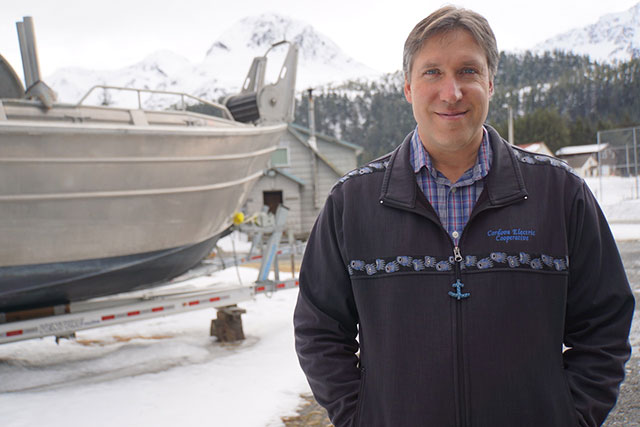 Cordova Mayor Clay Koplin told Truthout the Navy “picked the absolute worst time to do their exercise.” (Photo: Dahr Jamail)
Cordova Mayor Clay Koplin told Truthout the Navy “picked the absolute worst time to do their exercise.” (Photo: Dahr Jamail)
Clay Koplin is Cordova’s mayor. “It’s pretty simple,” he tells me. “The Navy has the whole span of the year to practice and they picked the absolute worst time to do their exercise. We asked for a conversation in hope of changing the timing,” he adds, turning his hands over in a gesture of puzzlement. “That’s how a conversation works. We hoped to find some middle ground, but thus far there’s been nothing to indicate they are willing to find that middle ground.”
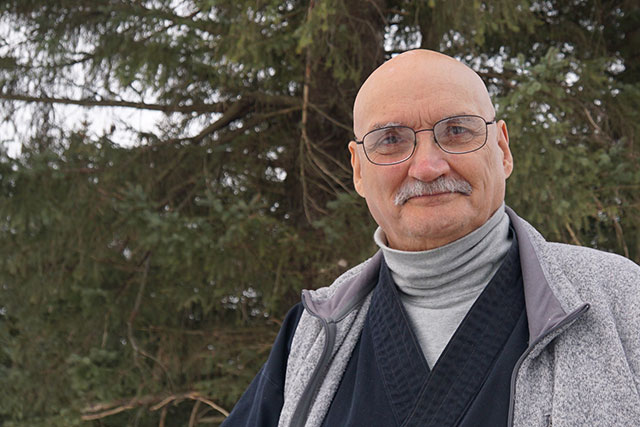 Kelly Weaverling, a former Cordova mayor who also used to work as a sailor on Naval nuclear submarines, is now a fisherman and Zen Monk who is very much opposed to the ongoing Naval exercises in the Gulf of Alaska. (Photo: Dahr Jamail)
Kelly Weaverling, a former Cordova mayor who also used to work as a sailor on Naval nuclear submarines, is now a fisherman and Zen Monk who is very much opposed to the ongoing Naval exercises in the Gulf of Alaska. (Photo: Dahr Jamail)
That same day, I meet Kelly Weaverling, the first Green Party mayor ever elected in this country. He took office in Cordova in 1990, right after the Exxon Valdez oil spill. A former naval navigator in nuclear fast-attack submarines, he is now a Zen Buddhist monk as well as a fisherman.
Sporting a shaved head and dressed in a black Zen robe, grey turtleneck, and sandals with wool socks, Weaverling strides in quietly, yet purposefully, having come straight from leading a three-hour meditation for the community. “What the Navy is doing, we know it is going to be bad,” he begins calmly. “We just don’t know how bad it’s going to be. It’s pretty easy to figure out. Anybody can do that.”
I ask him to explain and he responds, as though instructing me before one of his meditation sessions, “Is something positive, negative, or neutral is the question. Anything you do is going to have an effect, even if it’s a non-action… So the question is, what effect is it going to have? The Navy’s action will not have a positive effect on the ocean or any of its creatures. It’s going to be a negative effect, we just don’t know how bad.”
“In Your Backyard?”
In the end, I even received a response from Captain Schmidt of the Alaska Command, who agreed to answer some of my questions by email. I asked her what measures the Navy had taken in the wake of NE 15 to mitigate impacts on marine life. She responded by claiming flatly and without qualification that the new exercises would have “no significant impacts to marine life,” and that the Navy had already gone through “an extensive and comprehensive permit process” with the National Marine Fisheries Service (as they are, in fact, required to do by law).
Why then, I wondered, do its commanders refuse to allow independent wildlife observers aboard their vessels during the training exercises?
To do so, she insisted “would result in unacceptable impacts to readiness,” an odd response given that the only “impact” would assumedly be the use of binoculars.
As Northern Edge 2017 approaches, one thing is clear enough. Despite growing opposition in Alaska, the Navy continues to do just what it wants in the state’s once-pristine, biologically rich Gulf waters. Who knows how long it will be before parts of its vast marine web begin to test positive for the Navy’s toxins?
As a journalist, I’ve spent time in Iraq and seen the devastation the US military can visit on a society firsthand. But I must admit that I never expected to see it in Alaska, whose tallest mountains I spent a decade of my life climbing — where, thanks to Denali (the highest peak in North America), I fell madly in love with this planet. As someone who now regularly reports on climate disruption, I wonder daily how many more decades whole areas of the biosphere will even remain habitable. At a purely personal level, that makes the Navy’s ongoing war against Alaska’s waters and the wildlife in them unconscionable to me. And in the age of Trump, it’s unlikely the Navy high command will spend much time worrying about the environmental damage its war games are likely to cause.
For most Americans, Alaska is, of course, a distant, almost mythic place. But don’t be fooled. In Alaska, there’s a broader lesson to be learned from these war games. Christina Hendrickson makes the point in a way that speaks vividly to my own life experience. “If the Navy is able to come up to this pristine, biologically, ecologically and economically important area and train for war across three training cycles spanning six years and not engage local communities,” she says, “and if we’re allowing this to happen in areas where subsistence is carried out by people who have relied on it for millennia, why couldn’t this happen in your backyard?”
Join us in defending the truth before it’s too late
The future of independent journalism is uncertain, and the consequences of losing it are too grave to ignore. To ensure Truthout remains safe, strong, and free, we need to raise $27,000 in the next 24 hours. Every dollar raised goes directly toward the costs of producing news you can trust.
Please give what you can — because by supporting us with a tax-deductible donation, you’re not just preserving a source of news, you’re helping to safeguard what’s left of our democracy.